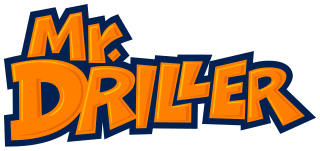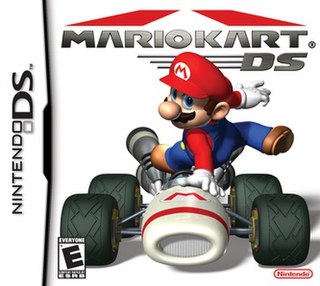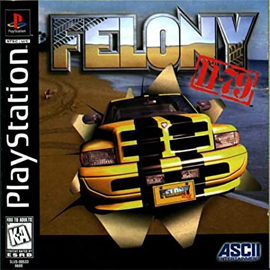
Wrecking Crew is an action game developed and published by Nintendo. Designed by Yoshio Sakamoto, it was first released as an arcade video game for the Nintendo VS. System in 1984, titled Vs. Wrecking Crew with a simultaneous two-player mode. It was released as a single-player game for the Family Computer (Famicom) console in 1985, and as a launch game for the Nintendo Entertainment System (NES) later that year. A sequel, Wrecking Crew '98, was released in Japan in 1998 for the Super Famicom.

Ice Climber is a platform game developed and published by Nintendo for the arcade VS. System in 1984, and for the Famicom and Nintendo Entertainment System consoles in 1985. The characters Popo and Nana, collectively known as the Ice Climbers, scale 32 vertically scrolling, ice-covered mountains to recover stolen vegetables from a giant condor. In some European countries, Ice Climber was bundled with the Nintendo Entertainment System.
SNK vs. Capcom, or alternately Capcom vs. SNK, is a series of crossover video games by either Capcom or SNK featuring characters that appear in games created by either company. Most of these are fighting game, and take on a similar format to Capcom's own Marvel vs. Capcom series, in which the players create teams of fighters and have them fight each other. Games in this series either contain SNK vs. Capcom or Capcom vs. SNK in their titles, with the first company named denoting the company behind the game's development.
Ridge Racer is a racing video game series developed and published for arcade systems and home game consoles by Bandai Namco Entertainment, formerly Namco. The first game, Ridge Racer (1993), was originally released in arcades for the Namco System 22 hardware, later ported to the PlayStation two years later as a launch title. It was met with several sequels and spin-off games for multiple platforms, the latest being the Android and iOS game Ridge Racer Draw & Drift (2016). Gameplay involves the player racing against computer-controlled opponents to be the first to finish in a race. Drifting is a core aspect of the series, and is used to keep speed while turning corners.

Mr. Driller is a puzzle video game franchise created by Yasuhito Nagaoka and Hideo Yoshizawa for Namco. The eponymous first game was released in 1999 for arcades and several home consoles, such as the PlayStation. Gameplay in the series consists of controlling Susumu Hori, the titular Mr. Driller, or one of his friends and destroying colorful formations of blocks to make it to the bottom of a well. In order to survive, players need to collect air capsules to replenish their depleting oxygen and avoid being crushed by falling blocks.

Mario Kart DS is a 2005 kart racing video game developed by Nintendo EAD Group No. 1 and published by Nintendo. It was released for the Nintendo DS handheld game console in November 2005 in North America, Europe, and Australia, and on December 8, 2005, in Japan. The game was re-released for the Wii U's Virtual Console in North America and PAL regions in April 2015 and in Japan in May 2016.
SD Gundam G Generation is a series of strategy-RPG video games that focus on the Gundam anime franchise.
Namco Museum is a series of video game compilations developed and published by Bandai Namco Entertainment for home video game consoles. The first title in the series, Namco Museum Vol. 1, was released for the PlayStation in 1995. Entries in the series have been released for multiple platforms, including the Game Boy Advance, PlayStation 2, PlayStation Portable, Nintendo DS and Xbox 360. the latest being Namco Museum Archives Vol. 2, released in 2020.
Metal Max is a role-playing video game series created by Hiroshi Miyaoka and his studio Crea-Tech. The first title was developed by Crea-Tech in collaboration with Data East, and was published by Data East in 1991. Due to the bankruptcy of Data East and trademark problems, some titles were released by Success co. under the title Metal Saga. Since the trademark issue was resolved by Enterbrain, some games in the series has been released under the title Metal Max again.

Densha de Go! 2 Kōsoku-hen is a train simulator. It is part of the Densha de Go! series. It was released in the arcades in Japan in 1998. It was ported to PlayStation, Nintendo 64, WonderSwan, Neo Geo Pocket Color, Windows, Dreamcast, and Game Boy Color. The Nintendo 64 version is titled Densha de Go! 64.

Super Robot Taisen Alpha, known as Super Robot Wars Alpha outside Japan, is a 2000 tactical role-playing video game developed and published by Banpresto for the PlayStation. A version for the Dreamcast, Super Robot Wars for Dreamcast, was released a year later.

Reel Fishing is a series of fishing video games by Natsume. The first game, Reel Fishing, was released for the PlayStation in 1996. Originally a localization of Victor Interactive Software's Fish Eyes series from Japan, Natsume has since diverged from that series to create their own games.
Climax Entertainment was a Japanese video game development company. It was a small company, with just 20 staff in 1996. Climax got its start during the 16-bit era, primarily developing games for the Sega Genesis console. During the 32-bit era, some members of the team left to create Matrix Software. Following the development of Dark Savior (1996), a group of staff members from the company's CGI division formed an independent company Climax Graphics, initially described as a "brother company".

Gardening Mama is a gardening simulation-styled minigame compilation video game for the Nintendo DS. It is a spin-off from the Cooking Mama series.

Pilotwings Resort is an amateur flight simulation video game for the Nintendo 3DS handheld game console, developed by Monster Games and published by Nintendo. It is a sequel to the 1990 Super NES video game Pilotwings and the 1996 Nintendo 64 game Pilotwings 64 as well as a spinoff of the 2009 Wii game Wii Sports Resort. Similarly to its predecessors, it was confirmed as a launch title in North America and Europe for the 3DS. In Japan, Australia and New Zealand, it was released on April 14, 2011.

Felony 11-79, known in Japan as Runabout, is a video game developed by Climax and published by Yanoman and ASCII for the PlayStation in 1997. It was part of a late 1990s wave of driving games which encourage the player to create chaos and destruction, being preceded by Die Hard Trilogy and Carmageddon. A sequel to the game, called Super Runabout: San Francisco Edition, was released in 2000.

E.X. Troopers, stylized as E.X. Tr∞pers, is a third-person shooter video game developed and published by Capcom for Nintendo 3DS and PlayStation 3. The game was released in Japan to retail customers on November 22, 2012 and later on Nintendo eShop and PlayStation Network on January 24, 2013.
Mega Man Legacy Collection is a series of video game compilations based on Capcom's Mega Man franchise. Each compilation features several playable video games from one of the Mega Man sub-series and adds new gameplay features and bonus content such as concept artwork. These compilations were developed internally at Capcom and were released between 2015–2023 for Nintendo Switch, PlayStation 4, Windows, and Xbox One, with the exception of the original Legacy Collection which was developed by Digital Eclipse and also released on Nintendo 3DS.

epics Inc. is a Japanese video game software developer located in Tokyo, Japan. Originally established as “GEN CREATIVE HOUSE CO., LTD.” in February 1987, changed company name to “G-Artists Inc.” in March 1991, then to “epics Inc.” in June 2006.











